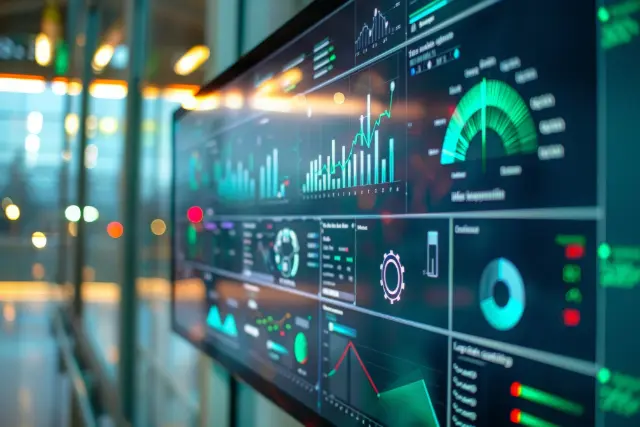Compliance Reporting Automation: A Lifeline for the Manufacturing Industry
In the ever-evolving landscape of the manufacturing industry, compliance reporting has become a crucial aspect of ensuring the safety and quality of products. However, manual compliance reporting processes can be time-consuming, error-prone, and prone to delays. Compliance Reporting Automation using Python, AI, and cloud-based solutions offers a lifeline for manufacturers, streamlining the process and ensuring timely and accurate reporting.
Challenges of Compliance Reporting in Manufacturing
- Data Collection: Gathering data from disparate sources, such as production logs, quality control records, and supplier documentation, can be a tedious and time-consuming task.
- Compilation and Analysis: Manually compiling and analyzing large volumes of data to identify trends and patterns can lead to errors and delays.
- Timeliness and Accuracy: Meeting regulatory deadlines and ensuring the accuracy of reports is paramount, but manual processes can compromise both.
The Power of Automation
Compliance Reporting Automation using Python, AI, and cloud-based solutions addresses these challenges by:
- Automating Data Collection: Python scripts can be used to extract data from various sources, saving time and reducing the risk of errors.
- Leveraging AI for Analysis: AI algorithms can analyze data to identify patterns, trends, and potential compliance issues, providing valuable insights.
- Cloud-Based Collaboration: Cloud platforms enable real-time collaboration and data sharing among stakeholders, ensuring timely and accurate reporting.

Python, AI, and Cloud: The Pillars of Compliance Reporting Automation
Python for RPA and Attended Bots
Python is an ideal language for developing both unattended and attended bots for compliance reporting automation. Unattended bots can be scheduled to run autonomously, extracting data from various sources and compiling reports without human intervention. Attended bots, on the other hand, assist human users in completing tasks, providing real-time guidance and automating repetitive actions. Python’s versatility and ease of use make it suitable for building bots tailored to specific compliance requirements.
Cloud Platforms as Automation Orchestrators
Cloud platforms offer a comprehensive suite of features and capabilities that surpass traditional RPA/workflow tools. They provide:
- Scalability: Cloud platforms can handle large volumes of data and multiple concurrent processes, ensuring efficient and timely reporting.
- Collaboration: Cloud-based solutions enable real-time collaboration among stakeholders, facilitating seamless data sharing and feedback.
- Integration: Cloud platforms integrate with various third-party applications and services, extending the functionality of compliance reporting automations.
AI for Enhanced Accuracy and Efficiency
AI algorithms play a crucial role in enhancing the accuracy and efficiency of compliance reporting automations. Techniques such as:
- Image Recognition: AI can analyze images, such as product labels, to extract data and identify potential compliance issues.
- Natural Language Processing (NLP): NLP algorithms can process unstructured text, such as regulatory documents, to extract relevant information and identify compliance gaps.
- Generative AI: Generative AI can generate reports and summaries based on collected data, saving time and improving consistency.
By leveraging Python, AI, and cloud platforms, manufacturers can streamline compliance reporting processes, ensure timely and accurate reporting, and free up valuable resources to focus on core business objectives.

Building a Robust Compliance Reporting Automation with Python and Cloud
Sub-Processes and Automation Steps
The compliance reporting automation process typically involves the following sub-processes:
- Data Collection: Python scripts can be used to extract data from various sources, such as production logs, quality control records, and supplier documentation. Cloud platforms provide secure storage and centralized access to data.
- Data Analysis: AI algorithms can analyze collected data to identify trends, patterns, and potential compliance issues. Cloud platforms offer scalable computing power and advanced analytics tools.
- Report Generation: Python can be used to generate reports based on the analyzed data. Cloud platforms provide templates and formatting options to ensure consistency and accuracy.
- Report Submission: Automated workflows can be created to submit reports to relevant authorities through secure channels. Cloud platforms facilitate seamless integration with external systems.
Data Security and Compliance
Data security and compliance are paramount in the manufacturing industry. Python and cloud platforms offer robust security features to protect sensitive data and ensure compliance with regulations.
Python vs. No-Code RPA/Workflow Tools
While no-code RPA/workflow tools offer a low-code/no-code approach, they may have limitations in terms of:
- Customization: Python provides greater flexibility and customization options, allowing for tailored automations that meet specific compliance requirements.
- Scalability: Python and cloud platforms can handle large volumes of data and complex processes, making them suitable for enterprise-scale compliance reporting.
- Integration: Python and cloud platforms offer extensive integration capabilities, enabling automations to interact with various systems and applications.
Algorythum’s Approach
Algorythum takes a different approach by leveraging Python and cloud platforms because we recognize the limitations of off-the-shelf automation platforms. Our Python-based solutions offer:
- Tailor-made Automations: We develop custom automations that precisely align with our clients’ unique compliance requirements.
- Scalable and Reliable: Our cloud-based solutions ensure scalability and reliability, handling large volumes of data and complex processes efficiently.
- Seamless Integration: We integrate our automations with existing systems and applications, eliminating data silos and streamlining workflows.
By partnering with Algorythum, manufacturers can harness the power of Python and cloud to build robust and effective compliance reporting automations that meet their specific needs and ensure regulatory compliance.

The Future of Compliance Reporting Automation
The convergence of Python, AI, and cloud technologies opens up exciting possibilities for enhancing compliance reporting automation in the manufacturing industry. Future developments may include:
- Real-Time Monitoring: AI-powered algorithms can continuously monitor production processes and quality control data, identifying potential compliance issues in real-time.
- Predictive Analytics: Advanced analytics techniques can predict future compliance risks based on historical data and industry trends, enabling proactive measures.
- Blockchain Integration: Blockchain technology can provide a secure and transparent platform for sharing compliance data among stakeholders, enhancing trust and traceability.
Subscribe and Contact Us
To stay updated on the latest advancements in compliance reporting automation, subscribe to our newsletter. For a free feasibility assessment and cost estimate tailored to your specific requirements, contact our team today.
Together, we can harness the power of technology to streamline compliance reporting, ensure accuracy, and drive operational efficiency in the manufacturing industry.

Algorythum – Your Partner in Automations and Beyond
At Algorythum, we specialize in crafting custom RPA solutions with Python, specifically tailored to your industry. We break free from the limitations of off-the-shelf tools, offering:
- A team of Automation & DevSecOps Experts: Deeply experienced in building scalable and efficient automation solutions for various businesses in all industries.
- Reduced Automation Maintenance Costs: Our code is clear, maintainable, and minimizes future upkeep expenses (up to 90% reduction compared to platforms).
- Future-Proof Solutions: You own the code, ensuring flexibility and adaptability as your processes and regulations evolve.









